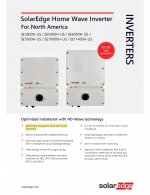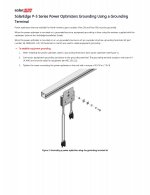mtnelect
HVAC & Electrical Contractor
- Location
- Southern California
- Occupation
- Contractor, C10 & C20 - Semi Retired
According to their installation instructions, all solar panels must have a "Power Optimizer" connected to each panel, for proper operation. Never worked with this brand before.




